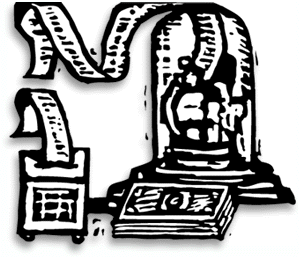|
|
|
JOB COSTING Q&A

|
|

|
GUARANTEED
GREAT IDEAS!
Job
Costing Tips from Real Clients & Profits Users
These Clients & Profits
users share their tips on how they manage job costing
better:
Don't start work on a job without a client-signed
estimate. "We do not start any work unless
we have the estimate signed," says Laura Noble
Plaura of Muse Cordero Chen. "It's very easy
for the client to change its mind, and if you
started work before you received the written
approval you may be stuck with incurred costs,
as they were not approved."
Pinpoint exact billing amounts. "We
have a strict cut-off date for billing, but
sometimes additional costs are added before
we can bill," says Kathy Borgione of Benghiat
Advertising. "We use the Job Cost report from
Snapshots to print job cost reports for a specific
date range. We can then bill exactly the amounts
we want to and leave the remaining costs for
the next billing cycle.
Review all job cost detail quickly. "I
print the Job WIP report from a job's WIP window
before I think about closing a job," says Laney
Gutstein of The Gary Group. "It helps me determine
if a cost has gone unbilled. It even shows
the AR invoice number a cost was billed on,
and whether or not the client has paid their
invoice. At our shop, we call it our Nothing
Falls Through The Cracks report."
Always use change orders to track changes
in a job's costs. "Using change orders
helps us track changes to a job's original
estimate," says Dawn Jaworski of Gabriel Diericks
Razidlo. "Change orders show up on the Job
Summary report (see pages 4-5) in their own
column making them very easy to track. We use
the Job Summary report a lot when getting ready
to close a job be sure that all costs are within
estimate."
Don't forget late job costs. "As soon
as a job is complete, we close it. If any late
costs come in," says Russ Norwood of 2g Marketing, "we
are immediately notified because jobs are reopened
and get the 'reopened' status. Our late costs
get billed; not forgotten about." |
|
Q.
Which costs affect the G/L? Why?
A/P invoices, job cost, checks and Employee Expense reports all affect
the General Ledger. When they are added, you'll reference a job and task,
and when they are posted the job will get updated along with the G/L.
Q. Which costs do not affect the G/L?
Time, in-house expenses and internal charges don't affect the G/L. They
are entered into the G/L in other ways. For example, payroll is entered
through a journal entry based upon your actual payroll checks.
Q. Why can I enter a job number on journal entries? Does
it affect the job?
This is for reference only, it does not affect the job. Audit Trail reports
can be printed for a job or sub-totaled by job. This is useful for analysis,
but it has no impact on the job.
Q. Are POs job costs?
No, POs are not considered job costs in Clients & Profits. They are
committed costs and always appear in their own column on reports--never
with actual job costs.
Q. What is a job cost's billing status?
A job cost's billing status is a word
|
|
that
describes the current state of an individual cost in regard to
its being billed. Examples of cost status are: Unbilled, Billed,
Unbillable, or On-Hold. If an unbilled cost is included on an
A/R invoice, like a Progress / Final billing, its cost status
changes from Unbilled to Billed. Cost statuses can also be manually
edited.
Q. How and why do you write off costs?
You should write off costs once the client has been billed as much as
possible for the job (and you can't transfer unbilled costs to another
job.) This will allow you to review them using the Write-offs report
and analyze your problem clients. Costs are written off from the job
WIP window, which lists a job's costs. Write-offs can be automated by
setting the "write-off all unbilled costs" option in preferences. If
checked, this option will automatically change the cost status to " write-off" for
any remaining unbilled costs whenever a job is closed.
Q. Are checks that pay A/P considered job costs?
No. That's because the A/P invoices themselves were job costs. (If they
were you would be charging the job twice for the same cost.) You can,
however, write checks for job costs (called "direct disbursements").
These checks don't pay off a vendor invoice; instead, you can enter any
number of jobs and tasks.
Q. When is an amount on a check considered a job cost?
When it was added as a job cost check (not a vendor, overhead, or employee
expense check). It means that the step of adding an invoice to a job
was skipped.
|
|
|

|
|
|
|
|